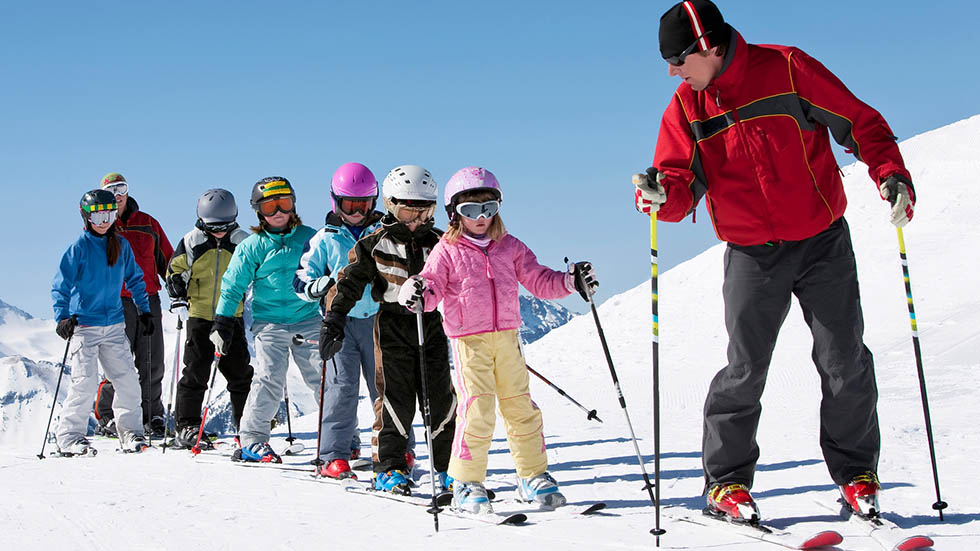
Rookie skiers may find their hearts racing at the base of the mountain as they make their way to the lift line flanked by experienced skiers. Unfortunately, it’s warranted. Ski culture assumes some understanding of not only standard guidelines but also various unwritten codes of conduct and basic know-how which will keep everyone safer.
Argentinian-born ski instructor, Silvia Zuppelli, lends us her expertise with some insider tips to help newbie skiers. She has taught for 20 seasons in Japan, Argentina, Chili, and Aspen, Colorado—where she appeared in marketing videos—before arriving in Jackson Hole, Wyoming. Certified with Professional Ski Instructors of America (PSIA), Zuppelli is passionate about teaching skiers.
Do your homework
Boost your confidence by reviewing the National Ski Areas Association’s Know The Code document which features seven rules of the mountain, Zuppelli suggests.

HOW TO DRESS AND WHAT TO CARRY
There’s a lot to keep in mind when preparing for a day of skiing. Stay warm by dressing in layers, “like an onion,” Zuppelli says. Being cold isn’t an excuse not to ski, she points out, because there are high-quality boot gloves as well as heated socks, gloves, and vests on the market. Wear one pair of thin socks and pull tight, ensuring there are “no wrinkles or you’ll get blisters,” she cautions. Goggles are a “must” to protect your eyes from the sun, which is reflected off the snow.
“Your cell phone should have the number of ski patrol entered in case you need help,” Zuppelli stresses. Sunscreen, SPF lip balm, and snacks can slip into zippered pockets. Tissues will be handy if you experience a nosebleed, which sometimes occurs in dry climates. If your resort doesn’t offer water on the mountain, Zuppelli advises carrying some to avoid dehydration.
Navigating ski lifts
Once you’ve entered the lift line, Zuppelli recommends unstrapping your poles for better control. When you reach the red line at the front, wait your turn before proceeding to the 2nd red line to be prepared to load. Hold both poles from the middle with one hand, so the other can help you grab the seat as it arrives. Zuppelli says, “Just sit, pull the safety bar down, and relax. Enjoy the ride!”
“At the top of the mountain, raise the bar only when you see the sign indicating it’s time,” Zuppelli says. With poles in one hand, use your free hand to help ready yourself to stand up. When both skis fully touch the snow, stand up. “Here is the important part: Stand up like you mean it with skis parallel and just allow yourself to slide down, with your balance a bit forward for control,” she explains.

Health and safety
“Be aware of altitude sickness symptoms, which include headaches, dizziness, vomiting and shortness of breath,” Zuppelli says. Rest, hydrate, and call a doctor if necessary.
Zuppelli says that if you encounter a skier lying in the snow, ask if they’d like you to call ski patrol. Once patrol is en route, cross your skis 20-feet uphill from the injured skier, planting them crossed in the snow so you are easy to spot.
Adopt the ski adage, “If you don’t know, don’t go,” Zuppelli counsels, which means to only enter terrain you know you can handle. Also, never go beyond roped areas as it’s unsafe. Violators could have their passes confiscated she warns. If alone, she urges foregoing trails through trees because tree wells are dangerous.
Post-skiing TLC
“Show yourself some self-care by soaking in a hot tub, using foam rollers for muscle knots and stretching or doing yoga,” Zuppelli recommends.

